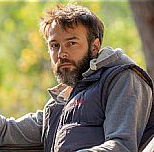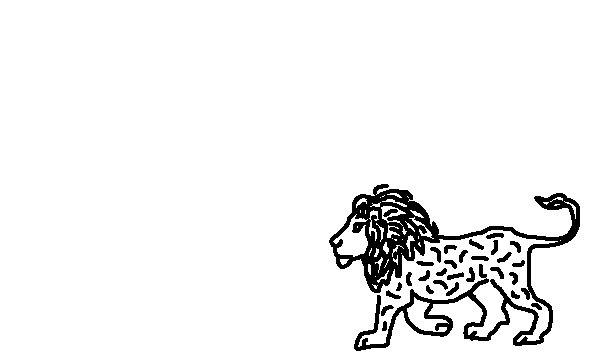Large carnivores are important animals economically and ecologically. They contribute to a lucrative tourism industry, and maintain ecosystem health by regulating prey populations. Unfortunately many predators also eat livestock, which heavily impacts the farmers living alongside them. Without effective tools to prevent this human-wildlife conflict, many carnivores are killed in retaliation, and their populations are in decline as a result. While the importance of conserving large carnivores is clear, how to solve this complex issue is less obvious. Enter the i-cow project.
Like many of the projects at BPCT, the i-cow project relies on applying our acquired knowledge of carnivore behaviour to address a conservation management problem. Lions and leopards are ambush predators, relying on stalking and the element of surprise to capture their prey. Just as eye-patterns on insects deter birds, and wearing a mask on the back of your head appears to prevent attacks by man-eating tigers, lions and leopards that are seen by their prey usually abandon their hunt. By painting large eye-patterns onto cattle we are testing whether exploiting this psychological response can reduce livestock predation by lions and leopards, and ultimately conserve carnivores by reducing retaliatory killing by farmers and herdsmen.
Importantly, the i-cow approach is low cost and requires no specialist tools, which is an unusual but desperately needed combination in human-wildlife conflict management. The ultimate goal of the project is to provide farmers with a cost-effective tool that reduces their need and desire to kill big cats and promotes coexistence.
This project is a collaboration between the Botswana Predator Conservation Trust (Botswana), the Centre for Ecosystem Science at the University of New South Wales (Australia) and the Taronga Conservation Society (Australia).

RESEARCH FELLOW - BIOBOUNDARY RESEARCH PROJECT
NEIL JORDAN, PHD
Neil Jordan joined BPCT in 2011 as a Post-doctoral researcher on the African wild dog Bioboundary project. Neil now holds a joint position as a Lecturer in the Center for Ecosystem Science (University of New South Wales, Australia) and the Taronga Conservation Society (Australia). Neil’s previous work investigated the function(s) of scent marking in wild carnivores and involved a combination of behavioural observations, field experiments and laboratory analyses of scent marks. He conducted his MSc through the University of Stellenbosch where he studied scent marking in meerkats in the Kalahari Desert, and followed this with a PhD at the University of Cambridge investigating scent communication in wild banded mongooses in Uganda. Prior to joining BPCT, Neil spent two years as the Pine Marten Project Manager for the Vincent Wildlife Trust, and was responsible for the detection and promotion of pine marten conservation throughout England and Wales. Neil is interested in the ecology and behavior of predators in human- or livestock-dominated areas, and in applying this knowledge to develop and evaluate tools to reduce human-wildlife conflict. A major aspect of his work at BPCT focuses on the scent-marking behaviour of African wild dogs, and whether scent can be used to manage their ranging behaviour and reduce human-wildlife conflict. Neil is also developing a research programme to investigate the ecology and behavior of large carnivores in livestock areas, principally lions, leopards and spotted and in applying this knowledge to develop and evaluate low-cost, locally-feasible, preventative tools to reduce livestock losses. See UNSW and Taronga web profiles, or follow Neil’s human-wildlife conflict updates on Twitter.

Dive straight into the feedback!Login below and you can start commenting using your own user instantly